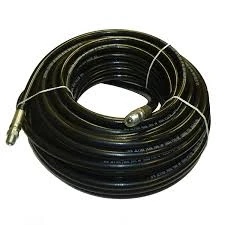R134a Refrigerant Charge Hose with Pressure Gauge for HVAC Systems
Understanding R134a and the Importance of Using a Charge Hose with Gauge
Refrigerants play a crucial role in our everyday cooling systems, from car air conditioners to home refrigerators. Among the various refrigerants available, R134a, also known as tetrafluoroethane, has gained significant popularity due to its efficiency and lower impact on ozone depletion. When servicing systems that utilize R134a, using an appropriate charge hose with a gauge is essential for several reasons.
What is R134a?
R134a is a colorless gas at room temperature and is often utilized in automotive and domestic refrigeration systems. Unlike its predecessor, R-12, R134a has a much lower potential for ozone depletion, making it a more environmentally friendly option. It is non-toxic and non-flammable, but it must be handled carefully as it can create pressure that could lead to accidents if not managed properly.
The Role of a Charge Hose with Gauge
A charge hose with a gauge is an essential tool for properly servicing systems that use R134a. This specialized hose allows technicians and DIY enthusiasts to add refrigerant safely and monitor the pressure within the system. When the charge hose is connected to the system, it provides crucial feedback through the gauge, allowing the user to make informed decisions about how much refrigerant to add.
Types of Charge Hoses
There are typically two types of charge hoses low-pressure and high-pressure hoses. The low-pressure hose is typically blue and connected to the low-pressure side of the air conditioning system, while the high-pressure hose is red and connects to the high-pressure side. Each hose and gauge setup is calibrated to respond accurately to the different pressures that exist within the HVAC system.
r134a u charge hose with gauge

Accuracy in Measurement
One of the primary benefits of using a charge hose with a gauge is the accuracy it provides. Refrigerant systems are sensitive to both temperature and pressure. Adding too much refrigerant can cause high pressure, leading to potential system failure or damage. Conversely, too little refrigerant can lead to inefficient cooling and increased energy costs. The gauge allows the operator to measure and adjust as necessary, ensuring optimal performance.
Safety Features
Safety is paramount when dealing with refrigerants. Charge hoses are equipped with various safety features that help reduce risks during the charging process. Most charge hoses come with a built-in shut-off valve that can prevent refrigerant from escaping into the atmosphere, which is essential for both safety and environmental reasons. Additionally, using a quality hose with durable materials will minimize risks of bursting or leaks, which could not only lead to the release of harmful chemicals but also potentially lead to injuries.
Preventive Maintenance
Regular maintenance of your refrigeration or air conditioning system is key to its longevity and efficiency. Utilizing a charge hose with a gauge allows technicians to perform routine checks. By monitoring the system's pressure levels, issues like leaks or underperformance can be identified and addressed early on. This proactive approach can save money and reduce the likelihood of costly repairs in the future.
Conclusion
In conclusion, the utilization of R134a as a refrigerant has made a notable impact on the refrigeration industry. However, with its advantages come the responsibilities of handling and servicing the systems that use it. A charge hose with a gauge is an invaluable tool that enhances accuracy, safety, and efficiency when dealing with R134a. Whether you are a professional technician or a DIY enthusiast, having the right tools, including a reliable charge hose, is crucial for maintaining modern cooling systems and ensuring they operate at peak performance. As we move towards a more environmentally conscious approach to refrigeration, understanding and utilizing the right equipment will be essential for the future.
-
Ultimate Spiral Protection for Hoses & CablesNewsJun.26,2025
-
The Ultimate Quick-Connect Solutions for Every NeedNewsJun.26,2025
-
SAE J1401 Brake Hose: Reliable Choice for Safe BrakingNewsJun.26,2025
-
Reliable J2064 A/C Hoses for Real-World Cooling NeedsNewsJun.26,2025
-
Heavy-Duty Sewer Jetting Hoses Built to LastNewsJun.26,2025
-
Fix Power Steering Tube Leaks Fast – Durable & Affordable SolutionNewsJun.26,2025

